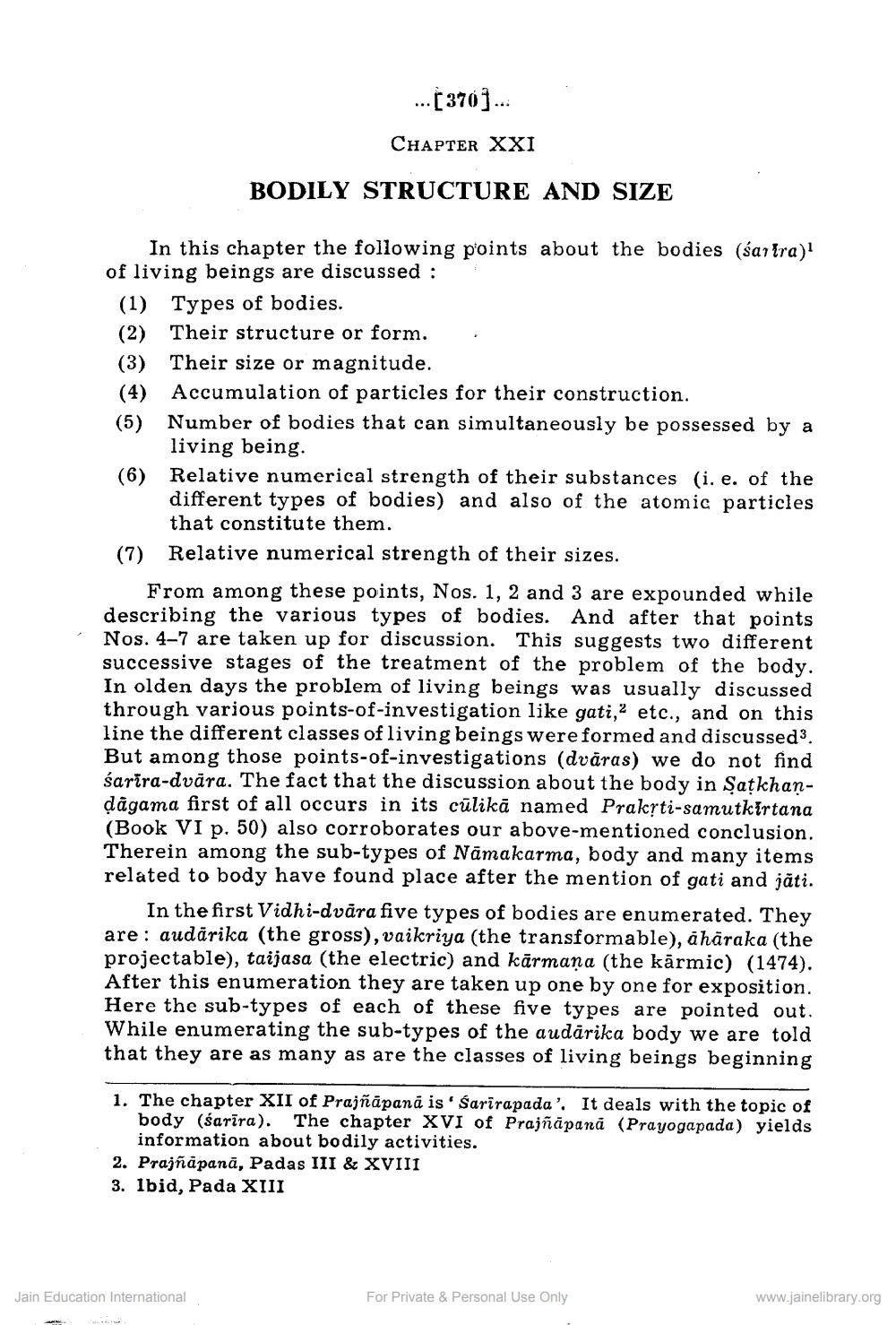________________
In this chapter the following points about the bodies (śartra)1 of living beings are discussed:
...[370]...
CHAPTER XXI
BODILY STRUCTURE AND SIZE
(1) Types of bodies.
(2) Their structure or form.
(3) Their size or magnitude.
(4)
(5)
(6)
(7)
Accumulation of particles for their construction.
Number of bodies that can simultaneously be possessed by a living being.
Relative numerical strength of their substances (i. e. of the different types of bodies) and also of the atomic particles that constitute them.
Relative numerical strength of their sizes.
From among these points, Nos. 1, 2 and 3 are expounded while describing the various types of bodies. And after that points Nos. 4-7 are taken up for discussion. This suggests two different successive stages of the treatment of the problem of the body. In olden days the problem of living beings was usually discussed through various points-of-investigation like gati, etc., and on this line the different classes of living beings were formed and discussed3. But among those points-of-investigations (dvaras) we do not find sarira-dvāra. The fact that the discussion about the body in Saṭkhandagama first of all occurs in its culikā named Prakṛti-samutkirtana (Book VI p. 50) also corroborates our above-mentioned conclusion. Therein among the sub-types of Namakarma, body and many items related to body have found place after the mention of gati and jāti.
In the first Vidhi-dvāra five types of bodies are enumerated. They are: audărika (the gross), vaikriya (the transformable), aharaka (the projectable), taijasa (the electric) and kārmaṇa (the karmic) (1474). After this enumeration they are taken up one by one for exposition. Here the sub-types of each of these five types are pointed out. While enumerating the sub-types of the audarika body we are told that they are as many as are the classes of living beings beginning
1. The chapter XII of Prajñāpanā is' Sarirapada'. It deals with the topic of body (sarira). The chapter XVI of Prajñāpanā (Prayogapada) yields information about bodily activities.
2. Prajñāpană, Padas III & XVIII
3. Ibid, Pada XIII
Jain Education International
For Private & Personal Use Only
www.jainelibrary.org




